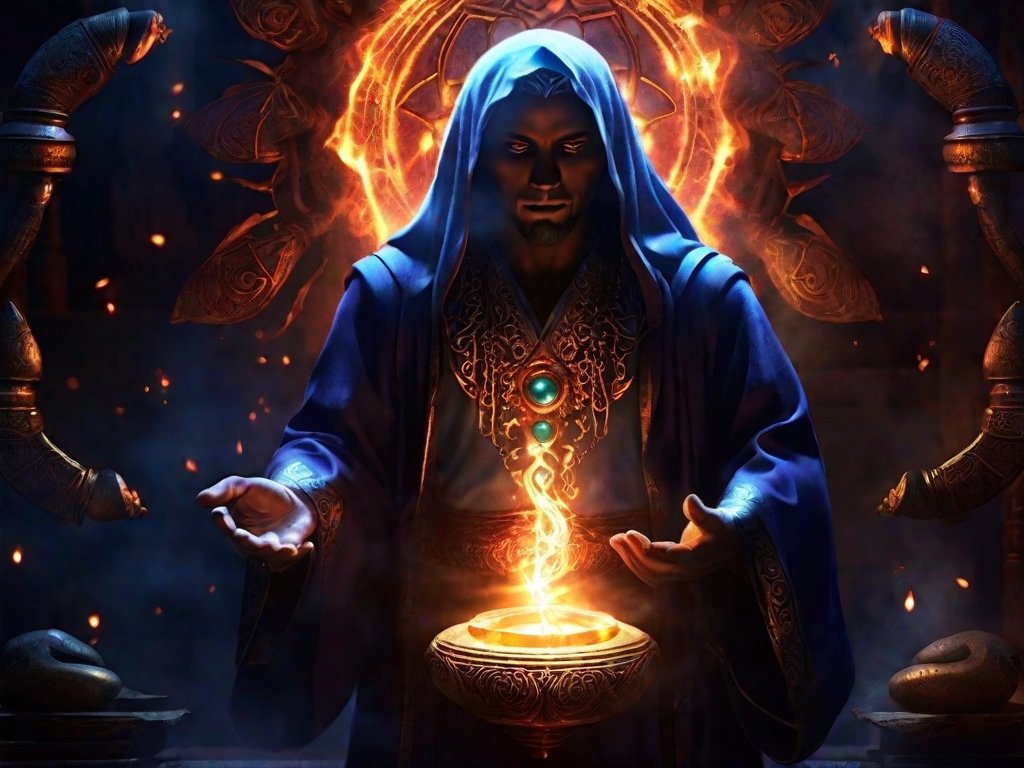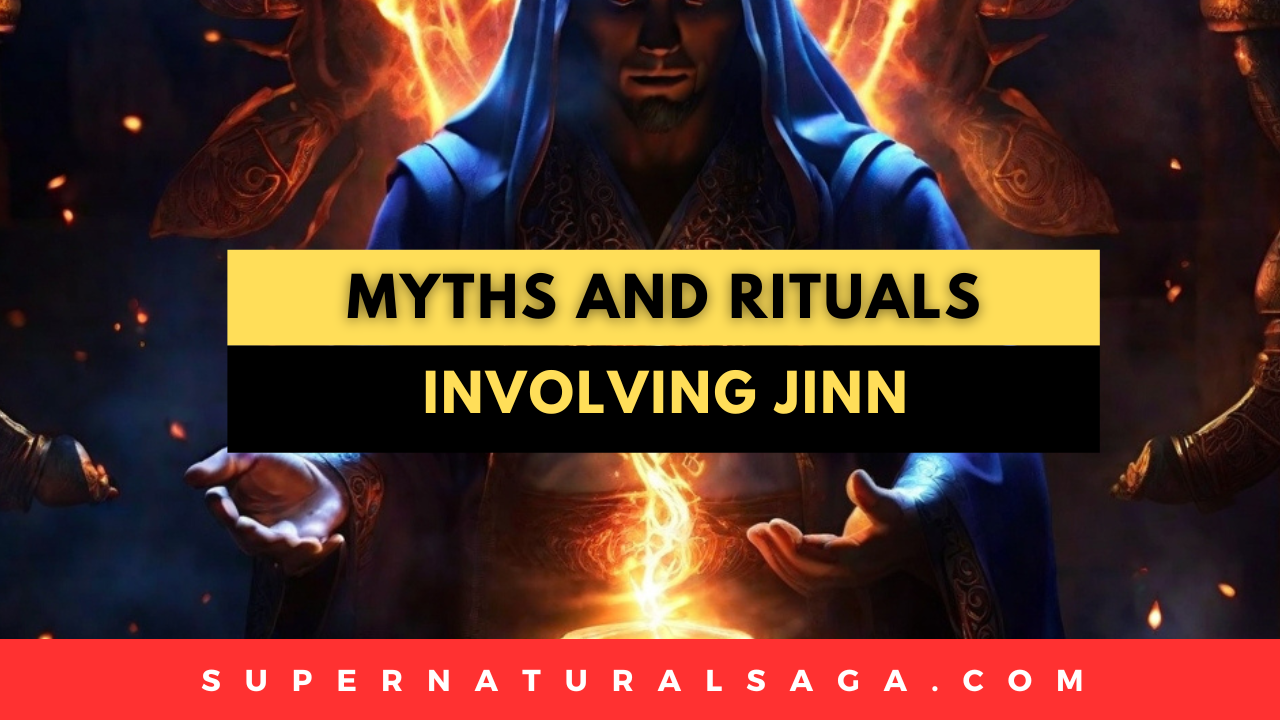Jinn are supernatural creatures that have captured the imagination of Arabic and Islamic cultures for millennia.
From pre-Islamic times to the present day, jinn have played a major role in mythology, folklore, theology, and magical practices across North Africa and the Middle East.
They are frequently mentioned in the Quran and remain an integral part of the popular imagination. This expanded article will provide a comprehensive overview of the nature of jinn, their origins, their prominence in ancient narratives and rituals, and the evolution of jinn beliefs up to contemporary contexts.
Origins and Nature of Jinn in Ancient Arabia
In ancient Arabia before the advent of Islam, jinn were thought to be elemental spirits linked to the wilderness, uncultivated landscapes, and the wind.
Jinn were said to inhabit mysterious, deserted locales and the vast, empty quarters away from human settlements.
They were shape-shifters able to take on animal forms. Jinn were neither fully good nor completely evil, but rather existed in a gray area as ambivalent trickster figures who could be helpful, mischievous or malevolent depending on their whims. Like humans, jinn had free will and could make moral choices for good or ill.
Ancient Arabs attempted to placate jinn by leaving offerings for them in remote locations. Jinn were thought to cause sandstorms, dust devils, and heat mirages in deserts.
Different tribes of jinn were associated with different environments – junūn frequented rivers and underground waters, si’lā with mountainous regions, and şu’ār with deserts.
The jinn were divided into clans with kings, courts, and dynasties.
Major types included ifrīts, marīds, and ghūls, each with different capabilities and supernatural powers.
Jinn in Pre-Islamic Mythology and Folklore
Jinn feature prominently in the folk tales, myths, and legendary narratives of pre-Islamic Arabia. Many stories tell of jinn haunting ancient ruins and punishing trespassers with madness or death.
In the famous Arabian folktale of Aladdin, he acquires a magic lamp containing a jinni captive who obeys the owner’s wishes. The tales of the One Thousand and One Nights contain many stories of jinn, their magical powers, and interactions with humans.
Jinn were thought to cause mental and physical illnesses in humans they possessed.
Symptoms of madness, delirium, convulsions were said to be signs of being afflicted by jinn. Jinn were also said to inspire poets and visionaries with bursts of creativity from their spiritual wisdom.
Ritual specialists attempted to invoke, bind and control jinn through spells, incantations and formulae to work both beneficial and destructive magic.
Jinn in the Quran and Early Islamic Texts
Jinn are frequently mentioned in the Quran and Islamic sacred texts.
The Quran states that God created jinn out of “smokeless fire” along with men out of clay and angels out of light.
Among the jinn, Iblis disobeyed God’s command to bow before Adam and was exiled as Shaitan (Satan). Though spirits, jinn could interact with the physical world and even mate with humans. Rules for how humans could engage jinn were laid out in sacred texts.
The Quran forbids occult practices like sorcery and augury as interference in God’s authority over jinn.
However, the Quran permits invoking God’s names and verses as defenses against evil jinn. Sacred texts told moral stories of pious individuals protected by God from harm by jinn.
Jinn provided inspiration for philosophical parables about obeying divine revelations and avoiding sin. These texts modified pagan Arab beliefs about jinn but retained their supernatural traits.
Rituals and Magical Practices Involving Jinn

Medieval Middle Eastern grimoires and manuals of magic provide glimpses into the occult rituals involving jinn.
Complex rituals were used to summon specific jinn, determine their names, bind them into service, communicate with them, and gain their occult knowledge. Magic circles, incantations, talismans and amulets were all used to manipulate, control and harness jinn for human ends, both benevolent and malign.
The manual Ghayat Al-Hakim, allegedly written by the sage Maslama al-Majriti, details how to summon jinn, gain their obedience, and interrogate them.
It provides intricate magical diagrams, formulas and invocations. Other manuals describe preparing rituals during astrologically significant times and using offerings, sacrifices, and charms to attract jinn. Practitioners of such magic were both respected and feared.
Exorcism rituals have also long existed to banish jinn said to possess humans. Using incantations, prayers, charms and religious verses, an exorcist would perform ceremonies to cast out the invading jinn and restore the victim to health and sanity. This practice continues today in some traditional Muslim societies.
Evolution of Jinn Beliefs in Modern Contexts
In contemporary Muslim cultures, while literal belief in jinn has declined among educated urbanites, it persists strongly in some traditional quarters. Among popular superstitions, misfortunes such as illness or bad luck are often blamed on jinn hauntings, curses, or possession.
Some Sufi orders believe communicating with jinn provides access to spiritual wisdom. Conservative Muslims view TV shows and social media featuring jinn as dangerous promotions of immorality and the occult.
In recent decades, jinn motifs have proliferated in movies, novels, artworks and children’s literature in Muslim-majority societies.
Jinn stories increasingly incorporate modern themes and settings. The evolution reflects an attempt to keep jinn relevant for younger generations.
Belief in jinn’s literal existence remains highest in more rural populations with lower literacy. Yet these populations may also adapt folk beliefs to modern contexts.
Conclusion
Jinn have played an integral role in the cultural and religious heritage of Arabic and Islamic societies from as early as pre-Islamic times.
Mythological narratives, occult rituals, exorcism practices, and folk beliefs attesting to the powers of jinn have persisted in both elite and popular forms of literature and ritual.
While updated and adapted to new contexts, the age-old fascination with jinn remains strong in the contemporary Middle Eastern imagination.
Academic analysis must account for both the complex history of jinn in classical texts and the continuing popularity of jinn in the modern era.

